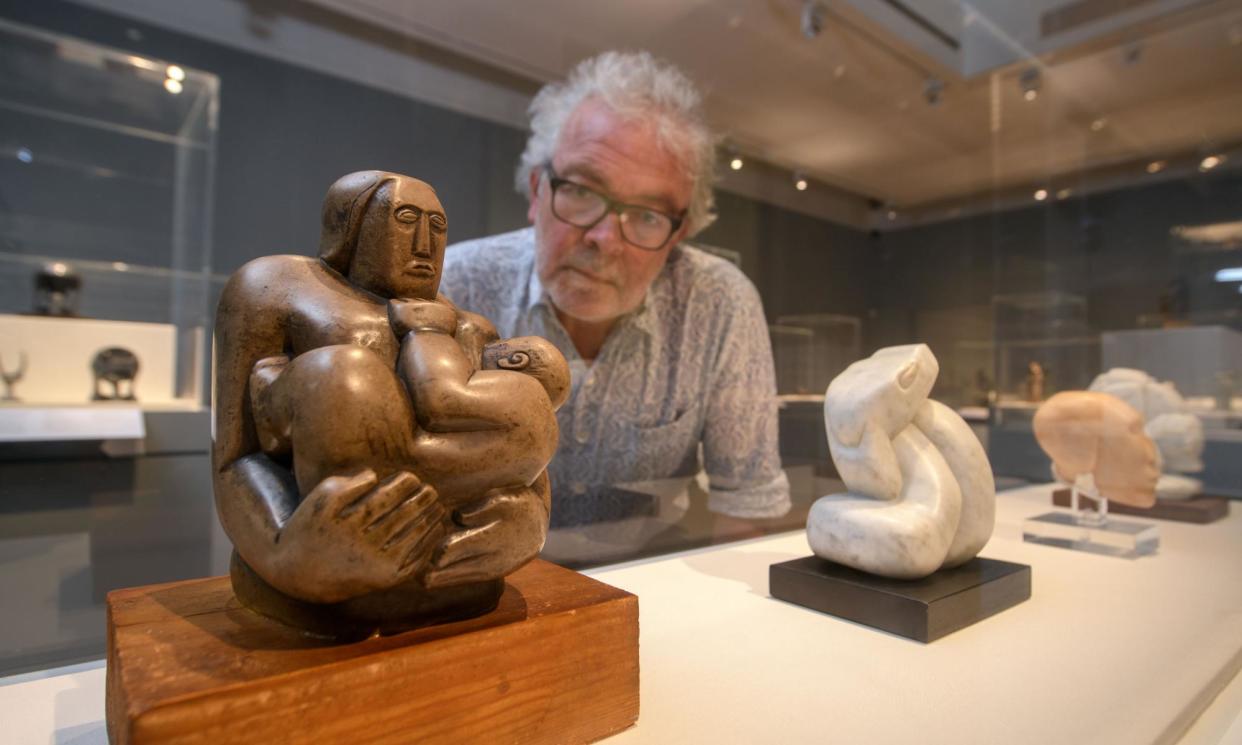Henry Moore’s miniature sculptures celebrated in Bath show

Henry Moore is celebrated for his monumental sculptures that turn city squares and parks into outdoor art galleries. But the Holburne Museum in Bath is staging a groundbreaking exhibition called Henry Moore in Miniature, a collection of the great artist’s works that could fit into the palm of the hand.
The museum’s director, Chris Stephens, said its relatively small spaces meant one of the themes of its programme was to showcase the intimate in art – and the retrospective of mini Moores met the brief perfectly.
He said visitors to the exhibition, which opened on Friday, would be able to imagine Moore industriously working away in his studio, finding new shapes and textures.
“The exhibition serves as a reminder that sculpture is as much an art of the hand – in its making and appreciation – as of the eye. An object may be small in size but large in scale,” he said.
The show, billed as the first of its kind, features sculptures in stone, wood, terracotta, plaster, lead, bronze and Plasticine, and takes in themes recurrent in Moore’s work: the reclining female figure, mother and child, the human head, the fallen warrior. It has works from every decade of his career, from the 1920s to the 1980s.
The first piece the visitor encounters is a mother and child from the 1920s modelled in Plasticine, which, pleasingly, was invented at the end of the 19th century by a teacher at Bath Academy of Art, William Harbutt. It sits next to a small animal head made of boxwood in 1921.
Another intriguing display features of a pair of mother-and-childs from the 1930s modelled in plaster and cast in lead, which Moore melted in saucepans on a kitchen stove. Stephens said the lead gave the pieces a “poisonous” air, which perhaps reflected political times as the world headed towards war.
Seen in public for the first time is a collection of small terracotta heads that Moore modelled while planning two carved heads for a church at Much Hadham, in Hertfordshire, in the 1950s.
Stephens said: “These reflect his interest in classical traditions, tribal masks and, perhaps, the graffiti carved into walls in Paris captured by the photographer Brassaï.” Moore’s fingerprints and tool marks are clearly visible in the heads.
The final displays are maquettes for yet more mother and child sculptures, dating from the late 1970s and early 1980s, and a cabinet of found objects from his studio that Moore worked with – bones, flints, stones.
Presented in partnership with the Henry Moore Foundation, the exhibition features more than 60 works, gathered in one room on the top floor of the museum. Moore’s daughter, Mary Moore, said she was delighted these smaller pieces would be seen.
She said: “An enormous amount of Henry Moore’s work – particularly the starting point for his universally familiar large-scale sculpture – began with his modelling, with his turning, moulding and forming in the palm of his hands.”
By way of contrast, a second show that opened at the Holburne on Friday stars a very different artist – Sam Cox, better known as Mr Doodle, who has almost 3 million followers on Instagram, sells his work for hundreds of thousands of pounds a time and has covered every inch of his Kent home with his intricate patterns.
Mr Doodle! Museum Mayhem is the first UK museum exhibition of his work, with the Holburne allowing Doodle to take over parts of the building and daub it with his “graffiti spaghetti” of black ink on white background.
He has also been given the go-ahead to replace some of its pieces with his own work. For example, John Constable’s Flatford Lock from the Bridge (circa 1814-17) has been replaced with Doodle House from the Gates (2024).
Doodle studied illustration at UWE Bristol and used to bring a suitcase of his work to Bath to try to barter for a meal or a drink. “That was mostly unsuccessful,” he said. “It’s cool to come back and do something grander.”


